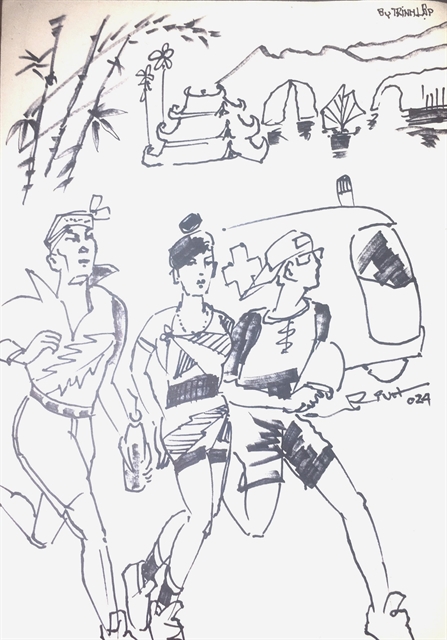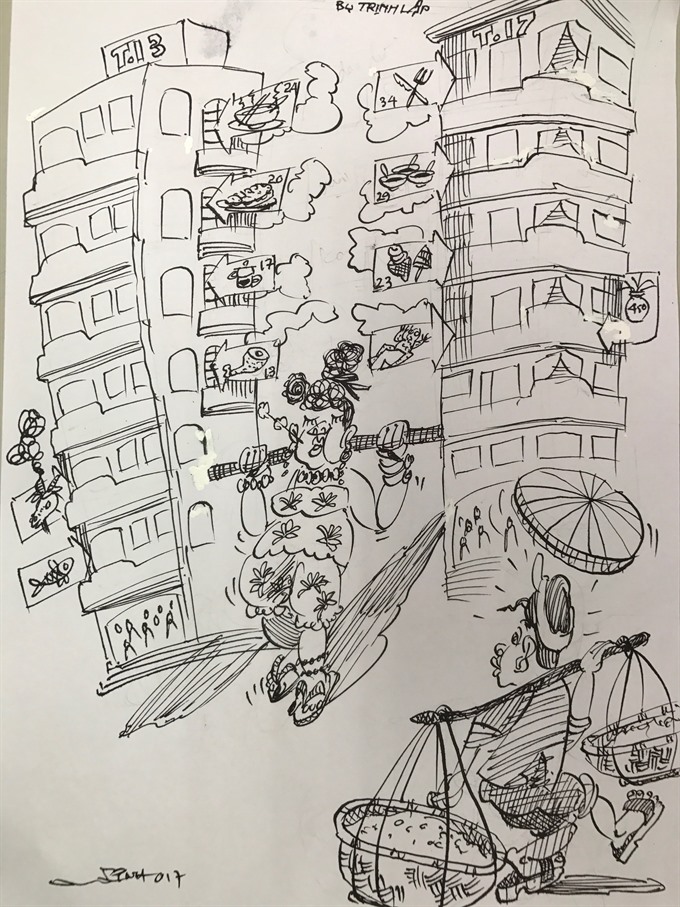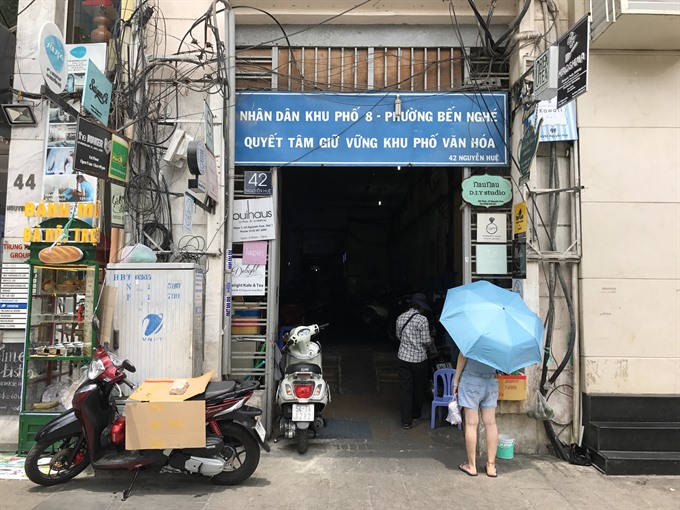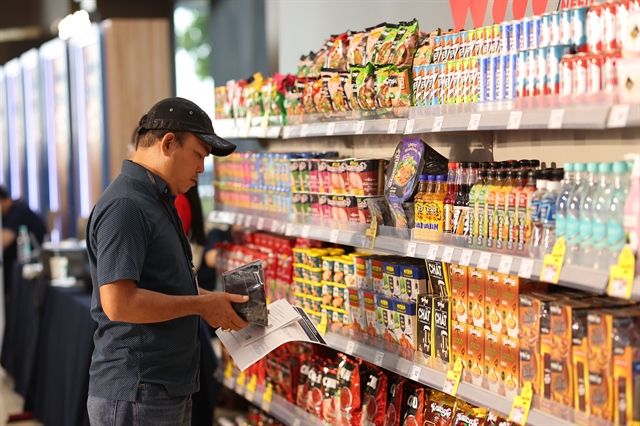 Talk Around Town
Talk Around Town

Many independent cafes and shops in old, atmospheric apartment buildings in downtown Hồ Chí Minh City are now being asked by the municipal authorities to find new locations.
 |
By An Phương
I’ve always enjoyed spending my weekends wandering around old, atmospheric apartment buildings in downtown Hồ Chí Minh City that house dozens of independent cafes and shops. Sadly, many of them are now being asked by the municipal authorities to find new locations.
Among many of the buildings, the ones on Nguyễn Huệ, Tôn Thất Thiệp and Lý Tự Trọng streets attract the most traffic, with many visitors every day.
“It’s not unusual to receive thousands of people on a daily basis since each floor has about five to six shops. Whether it’s café or a fashion boutique, we have them all here,” said Nguyễn Thị Ngân, who lives in the old apartment building at 42 Nguyễn Huệ, which was reportedly built in the mid-20th century.
While it’s especially popular among coffee drinkers who can enjoy a latte with a prime view of the city’s bustling pedestrian streets, the building at 42 Tôn Thất Thiệp Street is more of a fashion paradise.
With more than 30 local independent brands, including Outfix, Lookbook, MamaVirus, Penguin Island, Lider, HighCut and others, hundreds of fashion enthusiasts line the building’s stairs every day.
As I’m one of them, I can easily understand why such places are more popular than conventional shopping malls.
To begin with, it’s not just about globally trendy and unique goods offered at particular venues. It’s the lifestyle that speaks to visitors, who are mostly teenagers and young adults.
As each store brings out the best of its limited space, with visually striking decorations and a cool yet cozy vibe as well as relaxing music; who wouldn’t love to visit and experience a certain lifestyle that many traditional places lack?
One of my friends, Hoàng Điệp, 29, told me that she felt inspired every time she stopped by these old apartment buildings with their indie shops and restaurants.
“What stands out to me is the fact that all my beloved, affordable boutiques are located in one building, making it convenient for me to browse within a short amount of time and without worrying about parking my motorbike at different lots,” Điệp added.
In contrast to conventional malls where the price tags are relatively high, items sold in these buildings are lower, with a T-shirt ranging in price from VNĐ200,000 to 300,000 (US$9 - 13) or a hoodie from VNĐ400,000 to 600,000 ($17 - 26).
Since renting a unit in old apartment buildings is much cheaper compared to a storefront location, at around VNĐ5 – 12 million (US$200 - 500) per month, it’s not surprising that the clothing and services appeal to young people.
That being said, tenants who’ve lived in these old apartment buildings for years have been complaining about noise pollution and safety issues resulting from a growing number of patrons frequenting the cafes and boutiques.
“There have been nights when I couldn’t sleep because of the noise. Why don’t people go home at 11pm? Sometimes, I feel like I’m living in a supermarket,” Ngân said.
While only 20 families still live in the building on 42 Nguyễn Huệ Street, most of the landlords have rented out their other units to businesses, according to a report in Tuổi Trẻ (Youth) newspaper.
 |
| An old apartment building at HCM City’s 42 Nguyễn Huệ Street houses many indie fashion boutiques and cafés that will have to move out soon, by order of the city. – VNS Photo An Phương |
Besides noise, tenants and city authorities have raised concerns about fire safety, especially after a fire broke out in a similar building on Tôn Thất Thiệp Street last year.
Under the Vietnamese law on residential spaces, businesses are not allowed to operate in apartment units.
Last November, the HCM City Department of Planning and Investment gave warnings to shop owners in these old apartment buildings, requiring them to vacate. Strict penalties would be applied if they failed to do so, the department said.
However, business activities have continued, and in fact, are more popular than ever.
Trần Quốc Thắng, a member of the management board at the 42 Nguyễn Huệ building, said that 40 shops were still open and new ones were opening monthly.
With such activity, his team has found it difficult to keep in touch with every shop owner.
Though he was informed of the city’s policy, Thắng was quoted as saying in Phụ Nữ (Women) newspaper that he had not received official documents about the matter.
Lê Xuân Hạnh, head of the management board at 42 Tôn Thất Thiệp, said that, among 30 shops, only one or two shut down after district authorities ordered them to do so in December last year.
Hạnh added that authorities should have sent official documents to all of the landlords and tenants to ensure that they relocated.
As much as I agree with authorities that noise and unsafety are serious concerns and that sooner or later shop owners need to vacate, the city will lose one of its most charming attractions, both to locals and tourists.
“Many tourists know about this place. In fact, we welcome quite a lot of them to our shops every day,” a shop owner at the 42 Tôn Thất Thiệp apartment building said.
“Tourists often give us compliments, saying ‘wow’ when they see our decorations and items on display,” the owner added.
Ryan Sơn Hoàng, a shop owner at the 42 Tôn Thất Thiệp building, said he was sad about the move.
“Though I’ve found a backup place at The New Playground, a concept mall opening on March 18 at District 1’s Lý Tự Trọng Street, I’m going to miss the neighbourhood and all the fun memories that we’ve had for the last two years.”
Many concept malls for younger people, with design ideas similar to that of the The New Playground, exist in Singapore, where I lived for three years.
However, in my opinion, a concept mall is still a mall, which lacks the authentic vibe and unique character offered by converted (albeit unofficially converted!) apartment buildings.
While some of the old buildings do indeed need repairs, others are still in good condition and can be used safely.
“I don’t really know, but I feel that having shops in old apartment buildings has become a 'culture', something that is meaningful to the local teenagers and young adults,” my friend Điệp told me.
“I’m excited to see all the changes, but I hope there will be a balance between preserving a healthy hangout spot for young generations while ensuring safety for local residents,” Điệp said.
I’m in complete agreement with Điệp. So, my last word to like-minded folks: Embrace the “culture” while you can! — VNS









